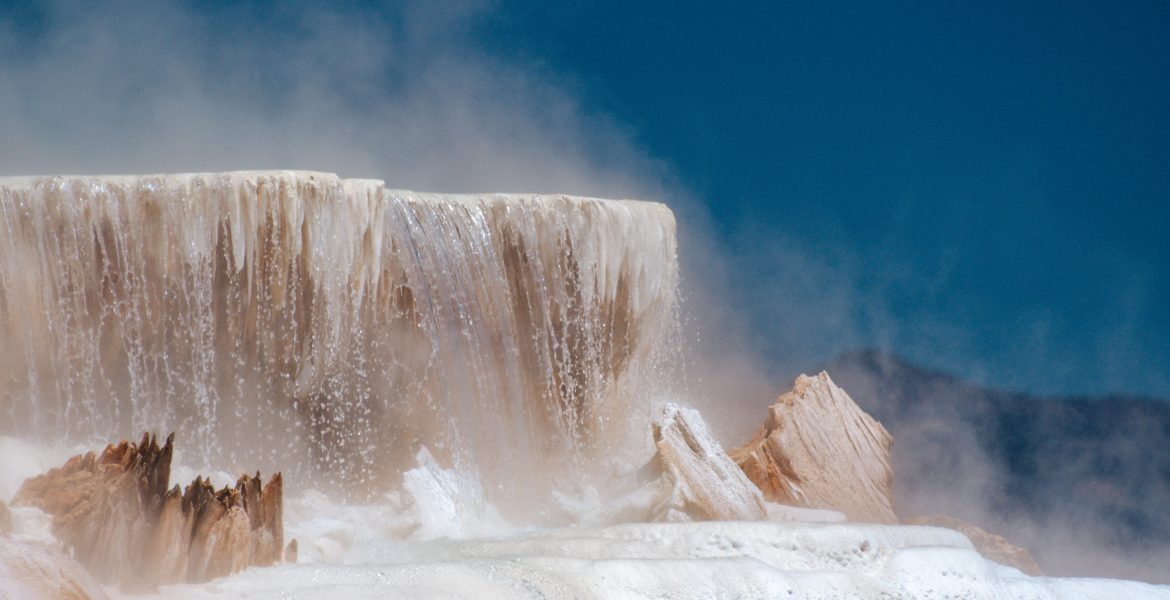
Yellowstone Hot Springs: Mammoth Hot Springs and Norris Geyser Basin
#PNW . Hiking . Outdoor Recreation . Trailer Camping . Travel . WyomingYellowstone Vacation – Recommended 7 Day Itinerary (Day 6)
You are viewing Day 6 of our 7-Day Itinerary for Yellowstone National Park, “Yellowstone Hot Springs: Mammoth Hot Springs and Norris Geyser Basin.” Click on any of the days in the list below to view the post for other days. You can also click here to view our full, printable 7-Day itinerary with highlights from each day to help you plan your own adventure to and through Yellowstone National Park.
Planning a trip soon? Use our links to get discounted tickets, rental cars, and more! Our site is partly supported by affiliate partnerships; your purchases through our affiliate links help support our site and the development of even more great content!
Day 1: Yellowstone Road Trip
Day 2: Henrys Lake State Park
Day 3: Yellowstone National Park – Old Faithful and Grand Prismatic Springs
Day 4: Lake Day and West Yellowstone
Day 5: Jackson, Wyoming and the Tetons
Day 6: Yellowstone Hot Springs – Mammoth Hot Springs – THIS POST
- Stop by the Gibbon Falls overlook on your way North to Mammoth
- Walk through primal mud pots and thermal pools between Gibbon Falls and the Norris Geyser Basin
- Smell the sulfur at Norris
- Hike around Mammoth Hot Springs (upper, lower, and everywhere in between)
- Tour Historic Fort Yellowstone, the visitor center, and Park Headquarters
- Track bison like a pro
Day 7: Fishing Henrys Lake
The Best Places to go in Yellowstone National Park – Day 6: Yellowstone Hot Springs
Pro Tips for Yellowstone National Park:
- During peak summer season, if you can get into the park before 9:00 am, you can stay ahead of the traffic and enjoy most popular sites before the majority of the crowds arrive. Think of it as being on the front edge of a wave; you want to get in and enjoy the sites before most traffic, buses, and other tourists arrive.
- Even earlier is better; we tried to get through the West Gate before 8, and noticed a big difference just by arriving closer to 8 rather than 9 am.
- Although you will want to visit the most iconic locations in the park, don’t neglect the lesser-known (and lesser-crowded) hikes, thermal pools, and day-use areas along the way. No matter what time of day, these spots provide much-needed tranquility and relative isolation after you’ve dealt with crowds of people at the more popular spots.
- This trip we didn’t plan to do a lot of hiking or backpacking, but that is the absolute best way to enjoy the park and its natural beauty. Even if you’re not planning to overnight it, there are plenty of day hikes and shorter walks for all ability levels, including many accessible, paved paths and walkways throughout the park.
- Be prepared for erratic drivers and oblivious tourists wandering around roadways looking for wildlife. Everyone is hoping to catch a glimpse of bison or bear or moose, and you’ll probably encounter others who aren’t safe or smart about it. Just chill and keep your eyes out – for wildlife AND wild tourists who aren’t paying attention!
What to do in West Yellowstone National Park: Gibbon Falls Overlook
Today we have two destinations: the Norris Geyser Basin and Mammoth Hot Springs. The great thing, though, about having a couple of must-see sights and a full day to see them is that we can stop along the way at unplanned and unexpected places. Case in point: the Gibbon Falls Overlook. We all liked this spot because (1) the falls are impressive, (2) we needed a stretch break, and (3) we were ahead of the crowds and had the spot pretty much to ourselves. Don’t get me wrong; I’m not opposed to big crowds. But when it comes to nature walks and scenery, less is more. And today, we’re ahead of the wave. We got here around 8am, and we consistently beat the crowds to each place we visited, right up until we led the crowds back out of the park to West Yellowstone.
Don’t let those smiles fool you; Nyah is not a morning person (same here), but Renn is more like Michelle and ready to go as soon as she wakes up. So Nyah and I are only half awake here. That’s also why I’m glad there are big stone barriers to keep us from sleepily wandering over the falls. We got up early today and grabbed a quick bite at a highly-recommended bakery in West Yellowstone that turned out to be so-so (at least the donuts were tasty). Lucky for us, though, there are plenty of amenities scattered throughout the park. We found out later, too, that Mammoth and Fort Yellowstone serve as the center of operations, distributing to all of the restaurants and eateries throughout Yellowstone. So don’t worry if you forgot a snack or need to grab a bite along the way, because each of the small villages in Yellowstone has food, gas, and supplies.
Yellowstone Hot Springs: Mud Pots and Thermal Pools
We toured thermal springs and mud pots a few days ago, but today we stumbled upon an even more impressive site between Gibbon Falls and Norris. I think this spot feels even more primal and remote, partly because it’s further off the road and more spread out along a hillside. In fact, you can climb up and around the pools to the mud pots. Steam wafts across deep, cavernous thermal pools because this is an active volcanic caldera, after all!
Yellowstone Hot Springs: From Soup to Stew
“The hydrothermal system at Artists’ Paintpots operates somewhat like a double-boiler in your kitchen. Just as the bottom pot of the double-boiler holds boiling water, underneath the ground here is a hot water system with hot acidic steam. This super-heated acidic steam heats the ground above it causing the rocks to dissolve into clay. The hot clay receives water from rainwater and snowmelt. This causes mudpot consistency and activity to vary with the season and amount of precipitation.”
– Interpretive Sign at Artists’ Paintpots, Yellowstone National Park
Yellowstone Hot Springs: Norris Geyser Basin
After we wandered back to the truck (and the restrooms and the chaotic parking area), we made our way to Norris. It’s actually called the Norris Geyser Basin, which turned out to be one of the busiest and most congested areas we saw all day. That’s partly because of the limited parking once you wind back into the complex. But the basin is worth it. This area has some of the largest multi-colored mineral pools and deposits we’ve seen. I can’t get over the turquoise-blue mineral water, partly because it reminds me of New Zealand’s glacial runoff.
The Norris Geyser Basin has various walking and hiking paths that loop around the thermal pools. Some paths are accessible, too, but not all of them. The Porcelain Basin, for instance, is a shorter, half-mile loop. The Back Basin trails, on the other hand, are slightly longer at 1 to 1 1/2 miles, depending on which route you take. The trails are well marked, but stop at the interpretive sign just before the museum building and start of the trails. You can also pick up a map (suggested donation: $1), or just follow your instincts. These are maintained wooden walking paths, after all, so it’s impossible to get lost!
Yellowstone Hot Springs: Beautiful and Bizarre
“As you walk through Norris Geyser Basin, you may feel as if you are encountering another world. In the basin – far below the towering peaks of the Gallatin Mountains – water accumulates underground. Heated by the Yellowstone Volcano, the water travels upward to erupt from acidic geysers, rise from steaming fumaroles, and simmer in shimmering pools.
– Interpretive Sign at the Norris Geyser Basin
Yellowstone Hot Springs: Mammoth Hot Springs
Mammoth Hot Springs is actually huge! In fact, it occupies most of a large hillside that slopes down toward Historic Fort Yellowstone. The complex is not far from Gardiner, Montana, and the Roosevelt Arch, but quite a drive up from the West Entrance or further South. The drive from the South, though, is enjoyable and the scenery changes almost every few miles. Starting from forested hills, once you get to the narrow mountain pass and a small waterfall, the views open up to the valley below and unique geological formations along the way. I had just commented that the scenery between Norris Geyser Basin and Mammoth wasn’t all that different from the mountains of Idaho when we turned the corner to the expansive range that leads down to Mammoth Hot Springs and the Fort. And while we are pretty spoiled with amazing scenery in Idaho, Yellowstone’s volcanic caldera and its thermal hot springs are pretty hard to beat!
Fort Yellowstone
“When Yellowstone was established in 1872, the fledgling park was viewed greedily by poachers, railroads, and mining interests. The nineteenth-century way of seeing wilderness as empty land on which to capitalize would need to change before these threats would be removed forever. The Army’s thirty-two year protection of Yellowstone from 1886-1918 bought time for the new national park idea to be accepted. As this completely new idea was gaining hold, wild places came to be viewed as worth protecting for their own unique value.”
– Interpretive sign above Mammoth Hot Springs, Yellowstone National Park
I know I said this the last time we visited Yellowstone a few days ago, but this is my favorite part of the park. Despite sharing the experience with a thousand new friends (which is just the reality of today’s growing population), there’s still plenty of space and time to take it all in and enjoy each little part of the experience. And I don’t even mind the smell of sulfur wafting up from the springs. Honestly, if that is something that keeps people moving along the path while I stand there enjoying the view, I’ll take all the sulfur smells in Yellowstone. I just love sharing these experiences with the girls, seeing the natural world through their eyes, whether it’s with crowds of tourists in Yellowstone or all by ourselves in the wilderness.
The reality, though, is probably a little less inspiring. Just as soon as I start to feel sweet and wistful about it all, one of the girls needs a snack, a bathroom, or a nap. And if I’m being honest, so do I. So I’ll snap a few quick photos of the top of Mammoth Hot Springs before we head back down to civilization for the above-mentioned necessities.
This is lower Mammoth Hot Springs, the closest section to Fort Yellowstone and the Northernmost section of springs. Here’s another little moment of truth: Michelle and I left the girls in the truck while we walked over to this section, because they needed a break from all the touring and snapping of photos. But I honestly can never get enough shots, especially when the subject matter is this good. And the girls were perfectly content to chill out and play a game together for a few minutes before we continued on. So we all got what we wanted, including a few more of my favorite shots from Mammoth Hot Springs.
What to do in West Yellowstone National Park: Historic Fort Yellowstone
Historic Fort Yellowstone has been expanded and developed over the years, and now serves as the base of operations for all of Yellowstone National Park. The former barracks and officer housing now house federal park employees, for example. There’s the Mammoth Hot Springs Hotel and the restaurant complex, also next door to the Sinclair service station and Yellowstone shops. (You can get a Yeti koozie with Yellowstone National Park emblazoned on the side, among other great souvenirs).

Aside from the pre-packaged food options at the Yellowstone store, there are two main restaurants in Mammoth. The first serves cafeteria-style fast-food options like hamburgers and sandwiches. The second offers a dine-in restaurant experience with a menu similar to the one at the Old Faithful Inn. We went into the cafeteria side (on the left or South side of the building), but quickly decided it was worth the wait for the full restaurant. (After I put my name in for a table, I heard a couple walking out saying “well that was a good call!”) If you’re in a hurry, the faster option is probably the way to go. Even though the food wasn’t quite as good as the Old Faithful Inn, we agreed that the sit-down restaurant was the better of the two options.
Depending on when you arrive in Mammoth, a great place to start exploring Fort Yellowstone is the Horace M. Albright Visitor Center. The Center has interactive displays and great information about the historic Fort. Most of the historic buildings are either housing for park employees or park administration facilities, from accounting and payroll to central distribution to the park’s many stores, shops, and restaurants. There’s even a gym and a credit union that we wandered into before heading back out to the post office and other more public facilities.
Right in the middle of it all, on a lawn surrounded by parking and the main road through town, a family of elk were grazing while young calves wandered back and forth between bushes and trees. A ranger patrolled the area, telling over-eager tourists to STAY BACK from the elk and their young. We couldn’t believe how many people tried to walk right up to the wild elk, drawing sharp remarks from the ranger. We decided he had the least enviable job that day, dealing with oblivious tourists who would otherwise be pummeled by protective adult elk hooves. (And just to be clear, I used a zoom lens to get my shots from across the street).
What to do in West Yellowstone National Park: Track Bison Like a Pro
It bears repeating: bison and other wildlife in Yellowstone are wild and not domesticated, farm-variety animals like cows, sheep, and goats in a petting zoo. In the time that we’ve been here, several tourists have been head-butted or gored because they either got too close to wild beasts or tried to pet them! So the best advice I can share here is to give any wild animals you encounter plenty of space, and only get close with a good zoom lens. That said, if you do come across wildlife and are lucky enough to do so away from throngs of people, you can capture some truly amazing images.
We were heading back past Gibbon Falls when I spotted this herd in the distance, bedded down along the Madison River. I found a safe turnout and flipped around so we could hike down the embankment toward the river. Again, even though I appear to be pretty close to these bison, it’s the magic of photography and a powerful Nikon lens that got me that close. I would never risk my life for a good photo, although I have taken a risk or two to get a great shot from time to time!











































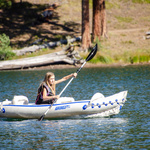
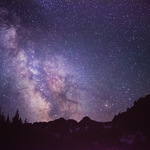
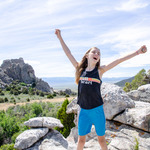
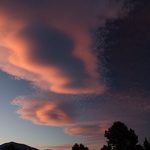
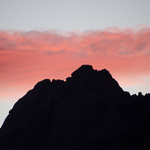
[…] Yellowstone: Mammoth Hot Springs and Norris Geyser Basin […]
[…] Yellowstone: Mammoth Hot Springs and Norris Geyser Basin […]
[…] Yellowstone: Mammoth Hot Springs and Norris Geyser Basin […]